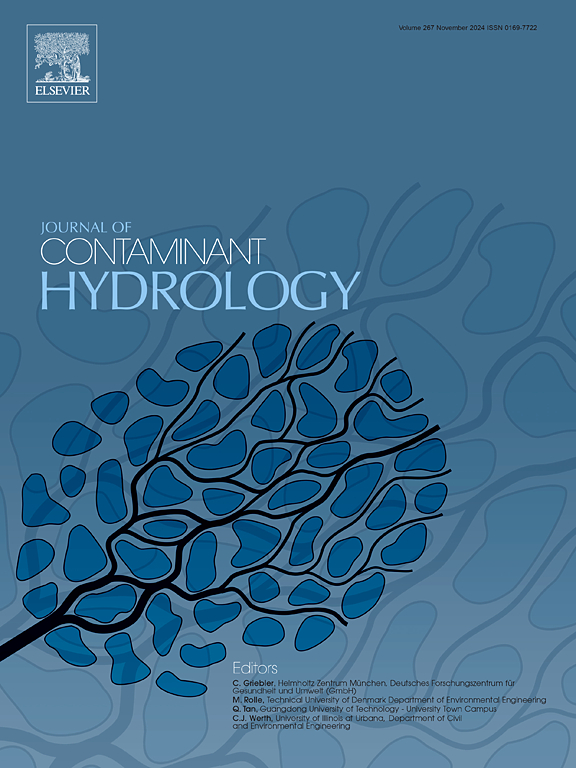基于人工智能的河水污染检测与控制策略:综述。
IF 3.5
3区 环境科学与生态学
Q2 ENVIRONMENTAL SCIENCES
引用次数: 0
摘要
水质(WQ)是评估河流等水体整体健康和安全的指标。由于其流域周围有人类居住,河流可能成为全球污染最严重的水源之一。预防和缓解河流水污染影响的解决方案面临许多挑战,其中之一需要对非线性、非平稳的水相关数据集进行管理。本文详细概述了基于人工智能(AI)的技术和算法,重点介绍了它们在河流水污染监测和控制关键领域的实际应用。本文回顾了2019年至2024年的河流WQ模拟模型,其中分析了来自各种数据库的110多篇研究文章。重点介绍了机器学习(ML)和深度学习(DL)技术的关键进展,包括人工神经网络(ANN)、深度神经网络(DNN)、长短期记忆(LSTM)和随机森林(RF)。此外,还测试了物联网(IoT)技术的融合,通过持续的数据收集和先进的ML/DL模型,展示了它们在增强实时监控和预测能力方面的作用。这篇综述通过展示机器学习、深度学习和物联网创新在表面WQ建模中的应用,解决了关键挑战,并确定了未来研究的新兴机会。它强调了利用先进技术形成可持续水资源管理和保护重要水生生态系统的强化解决方案的潜力。本文章由计算机程序翻译,如有差异,请以英文原文为准。

Artificial intelligence based detection and control strategies for river water pollution: A comprehensive review
Water quality (WQ) is a metric for assessing the overall health and safety of water bodies like a river. Owing to the habitation of anthropogenic habitation around its basin, the rivers can become one of the most contaminated water sources globally. The solutions to prevent and remit the impact of river water pollution faces many challenges, one of these entails the management of nonlinear, nonstationary water related dataset. This paper provides a detailed overview of Artificial Intelligence (AI) based techniques and algorithms, highlighting their practical applications in the critical domain of river water pollution diction and control. This review shows models for river WQ simulation from 2019 to 2024, in which over 110 research articles from various databases are analyzed. Key advancements in Machine Learning (ML) and Deep Learning (DL) technologies, including Artificial Neural Networks (ANN), Deep Neural Networks (DNN), Long Short-Term Memory (LSTM), and Random Forest (RF), are highlighted. Besides that, the amalgamation of Internet of Things (IoT) technologies is tested, showing their role in enhancing real-time monitoring and predictive capabilities through continuous data collection and advanced ML/DL models. This review addresses critical challenges and identifies emerging opportunities for future research by showcasing the application of ML, DL, and IoT innovations in surface WQ modeling. It highlights the potential of leveraging advanced technologies to form strengthen solutions for sustainable water resource management and the protection of vital aquatic ecosystems.
求助全文
通过发布文献求助,成功后即可免费获取论文全文。
去求助
来源期刊

Journal of contaminant hydrology
环境科学-地球科学综合
CiteScore
6.80
自引率
2.80%
发文量
129
审稿时长
68 days
期刊介绍:
The Journal of Contaminant Hydrology is an international journal publishing scientific articles pertaining to the contamination of subsurface water resources. Emphasis is placed on investigations of the physical, chemical, and biological processes influencing the behavior and fate of organic and inorganic contaminants in the unsaturated (vadose) and saturated (groundwater) zones, as well as at groundwater-surface water interfaces. The ecological impacts of contaminants transported both from and to aquifers are of interest. Articles on contamination of surface water only, without a link to groundwater, are out of the scope. Broad latitude is allowed in identifying contaminants of interest, and include legacy and emerging pollutants, nutrients, nanoparticles, pathogenic microorganisms (e.g., bacteria, viruses, protozoa), microplastics, and various constituents associated with energy production (e.g., methane, carbon dioxide, hydrogen sulfide).
The journal''s scope embraces a wide range of topics including: experimental investigations of contaminant sorption, diffusion, transformation, volatilization and transport in the surface and subsurface; characterization of soil and aquifer properties only as they influence contaminant behavior; development and testing of mathematical models of contaminant behaviour; innovative techniques for restoration of contaminated sites; development of new tools or techniques for monitoring the extent of soil and groundwater contamination; transformation of contaminants in the hyporheic zone; effects of contaminants traversing the hyporheic zone on surface water and groundwater ecosystems; subsurface carbon sequestration and/or turnover; and migration of fluids associated with energy production into groundwater.
 求助内容:
求助内容: 应助结果提醒方式:
应助结果提醒方式:


